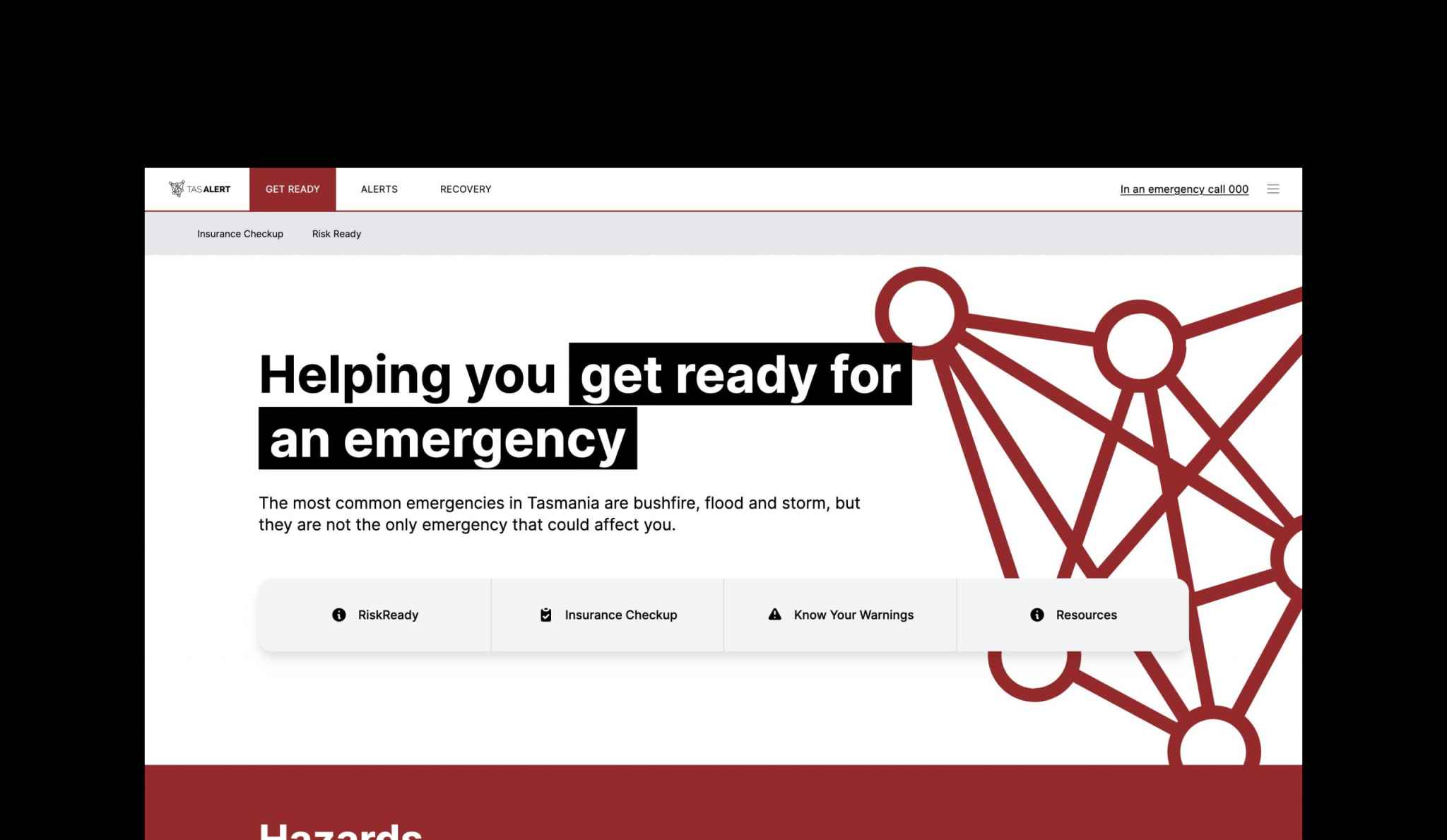
TasALERT
Launched in December 2013, TasALERT has become the cornerstone of emergency communications for the Tasmanian Government.
Serving as the official source for critical updates across all government agencies and emergency services, TasALERT plays a vital role in the safety and preparedness of Tasmanians facing natural disasters and emergencies.
After eight years of operation, the platform required a significant rearchitecture to enhance accessibility and user experience, particularly during urgent events.
In collaboration with the Office of Security and Emergency Management, Tasmanian Fire Service, and State Emergency Service, we undertook a comprehensive digital transformation of both the TasALERT website and its publishing portal.
This transformation aimed to create a more intuitive and scalable solution, ensuring the platform’s future readiness.
The project extended to a full redevelopment of the publishing and messaging system used by TasALERT, TEIS, and social media platforms, solidifying TasALERT’s role as the single, most reliable point for emergency communication in Tasmania.”
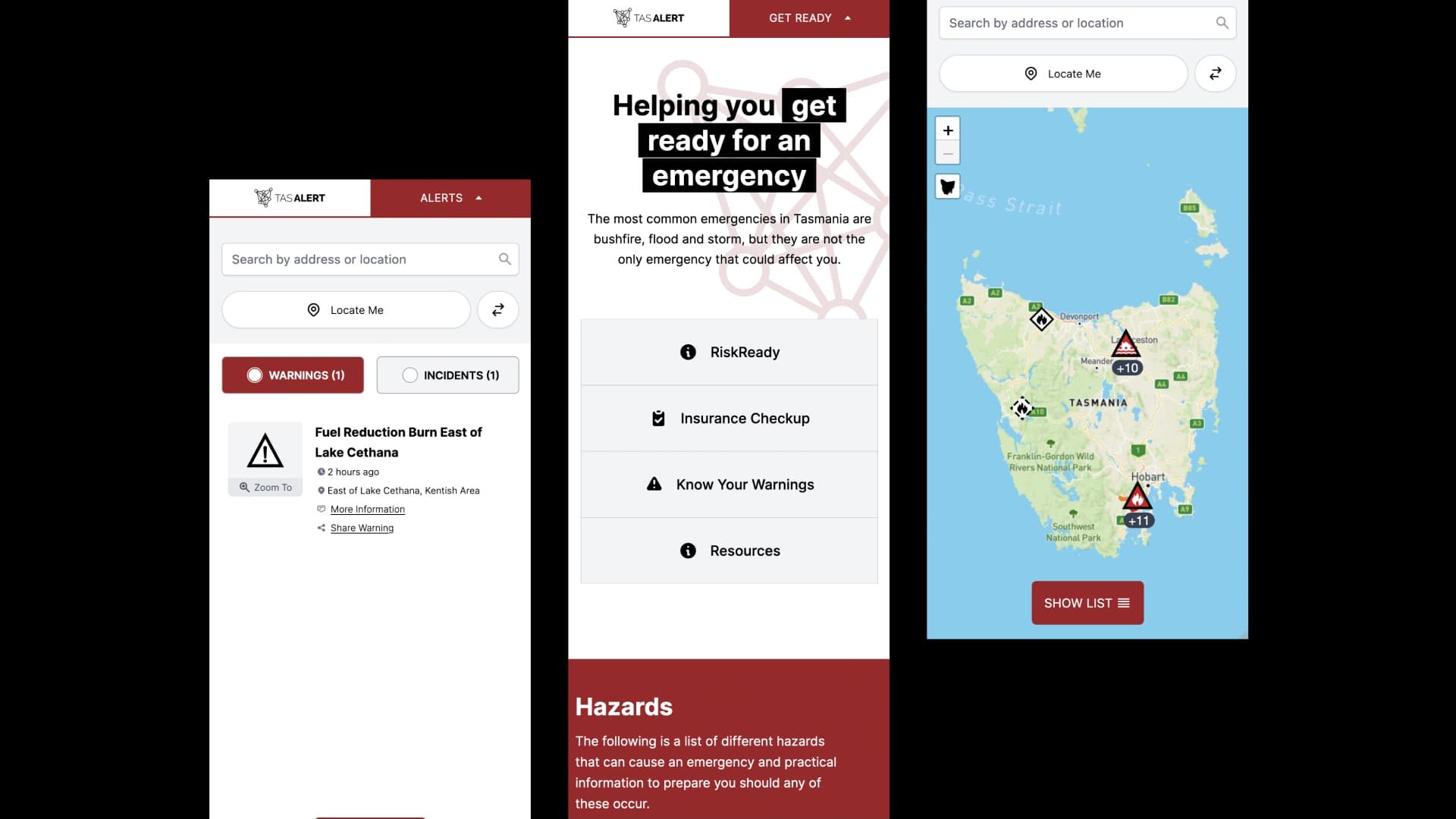
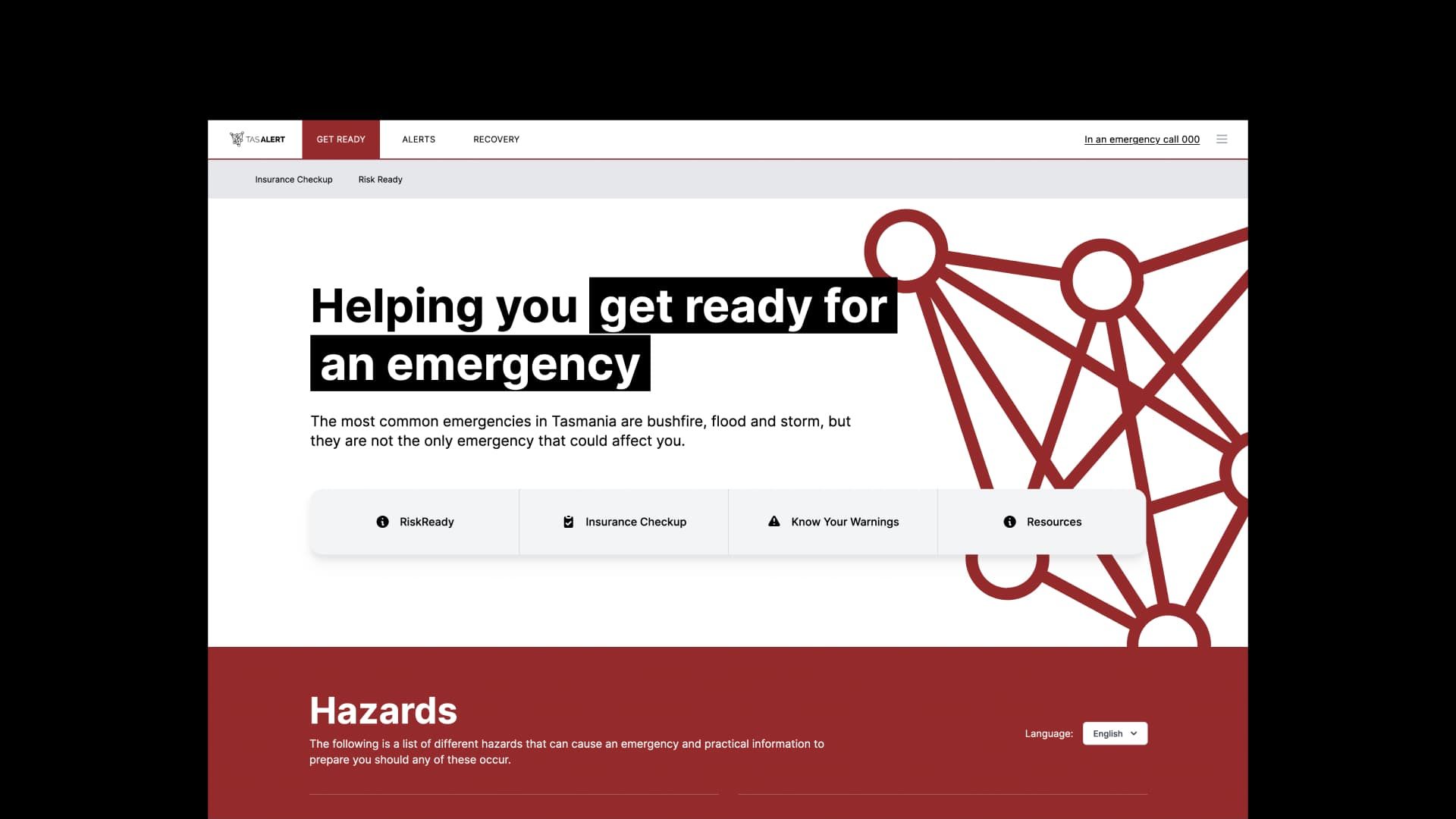
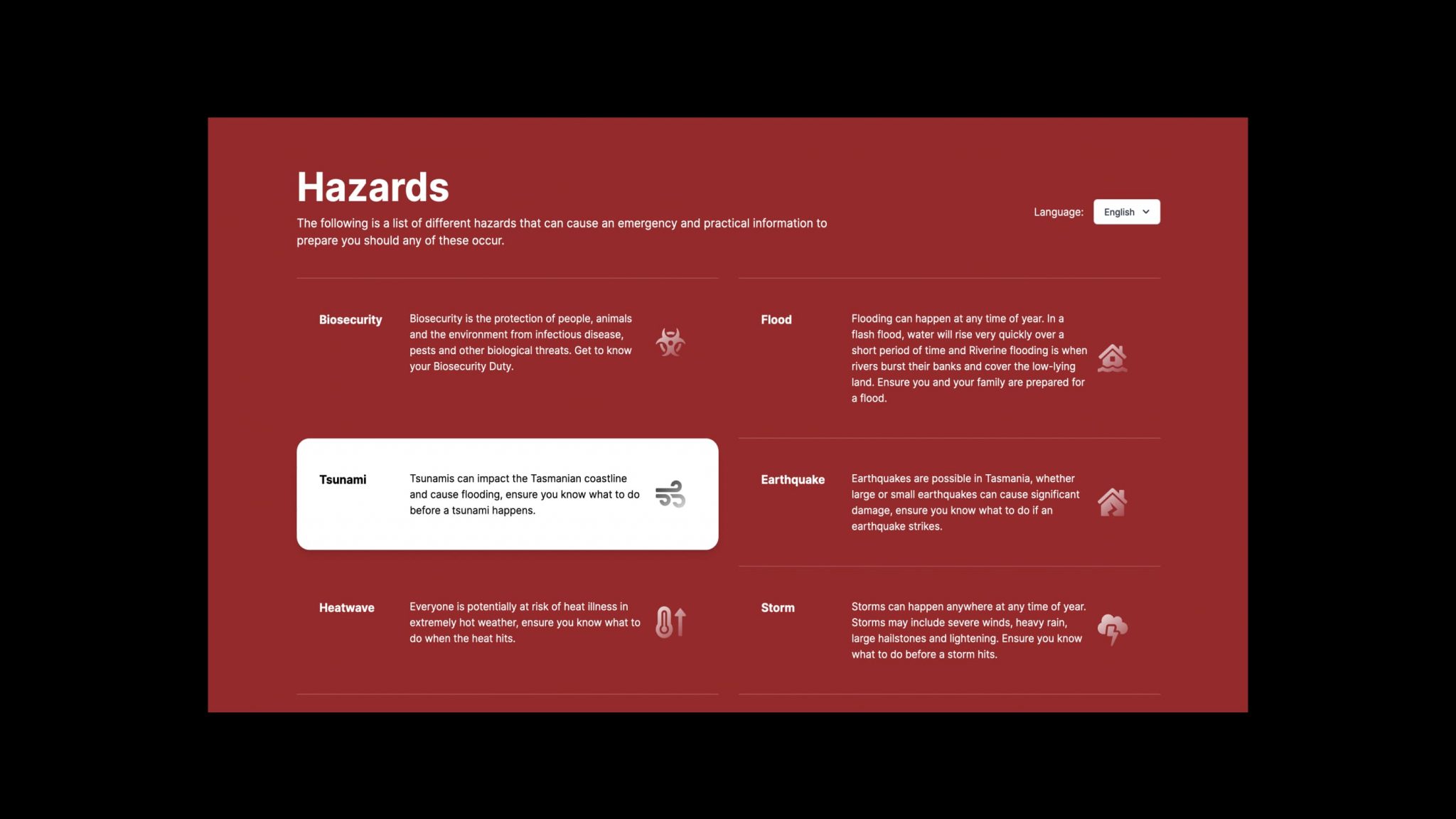

The authoritative source for emergency communications within Tasmania
The TasALERT project presented many significant challenges, but primarily the integration of disparate systems was key. The goal was to merge multiple emergency communication systems into a single platform without disrupting ongoing operations.
High availability requirements required careful planning and execution. Given that the platform needed to be highly reliable, especially during peak usage in emergencies, it was imperative to implement a robust solution capable of handling significant spikes in usage.
Accessibility was a core thread to delivery also. The system had to be easy to use for all, including those with disabilities, in stressful environments and potentially life-threatening situations.
Strategic structural development
The project kicked off with collaborative workshops involving many inter-governmental stakeholders This framework was crucial for gathering essential requirements, which informed the drafting of the initial UX and UI design.
The project progressed into an agile development cycle, characterised by continuous delivery, ensuring that each component of the TasALERT system was built to specification.
The system underwent extensive testing, including load testing to assess its performance and user acceptance testing to ensure spec compliance.
Deployment was structured as a gradual rollout, with testing and confirmation baked in to each stepped release. Detailed monitoring of the system’s performance was undertaken, enabling the team to quickly identify and address any operational issues that arose. C
Each phase was interlinked and designed to ensure that the system was not only robust, but also user-friendly and capable of serving critical needs during high demand periods.

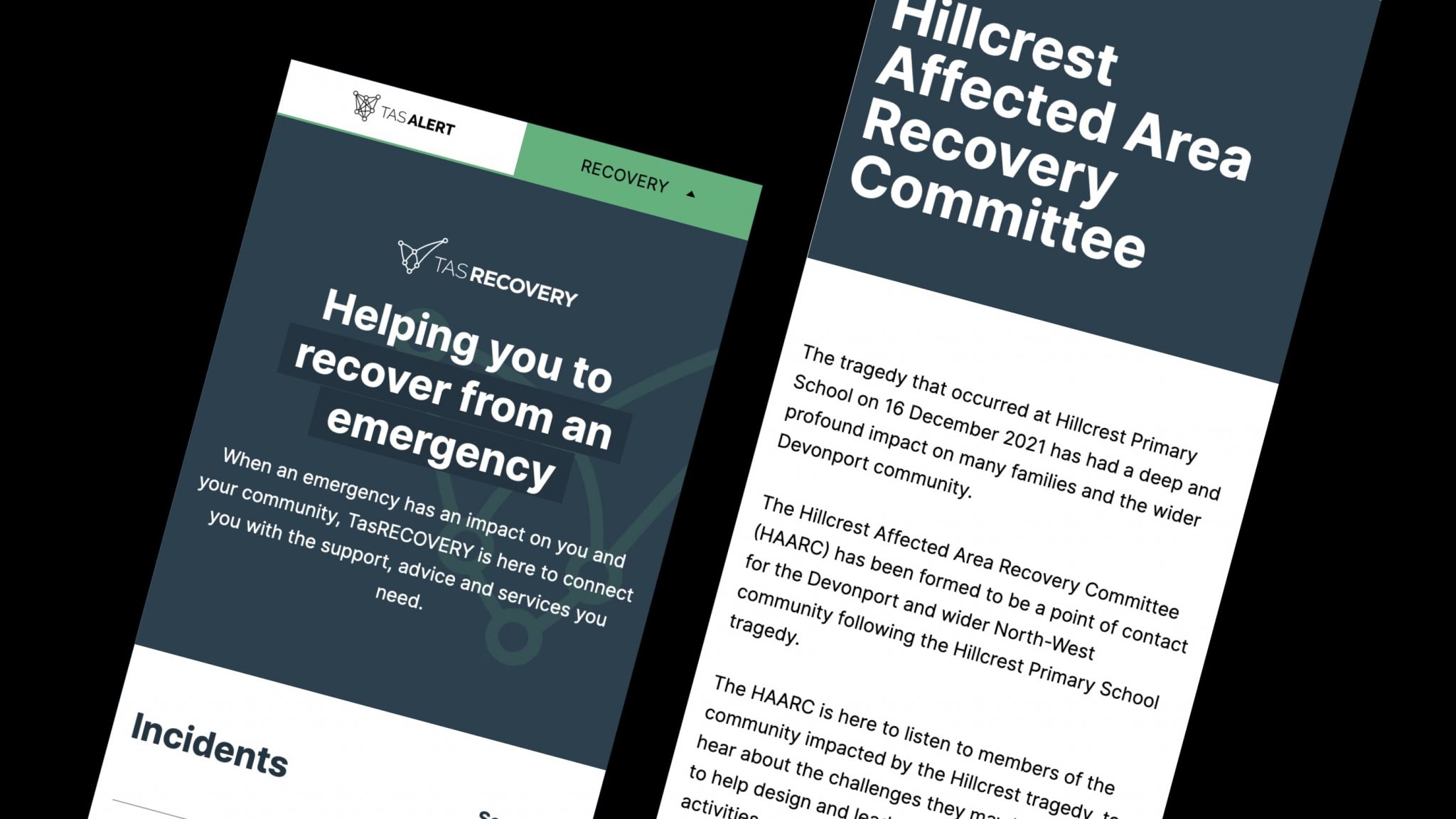
Critical emergency infrastructure
As an AWS Partner, we leveraged advanced cloud capabilities to architect a resilient and scalable solution tailored to meet high demands.
Utilising AWS’s elastic load balancing through Amazon Elastic Beanstalk, the system is engineered to automatically scale up resources as needed, ensuring the website can handle sudden surges in traffic without any dip in performance.
Further enhancing the system’s efficiency, we implemented a strategy to offload static content such as images and JavaScript to Amazon Simple Storage Service (S3).
The use of advanced AWS technology, underscores our expertise in deploying cloud solutions.



